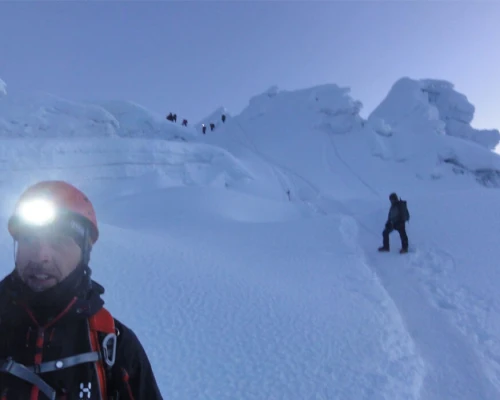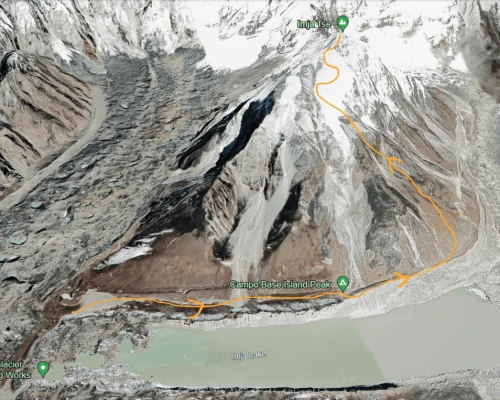Island Peak Climbing Highlights
- Experience an adventurous journey summiting Island Peak, crossing through its challenging terrain and crevasses, and ultimately enjoying the view from the summit.
- Trek through a picturesque trail with vibrant rhododendron blooms, diverse flora and fauna, and stunning mountain vistas.
- Visit the iconic monasteries of Khumjung, Tengboche, and Pangboche, and interact with Sherpa communities, connecting with their local traditions, hospitality, and the profound spiritual bond between the Sherpa people and their mountainous homeland.
Island Peak Climbing in Nepal is a popular climbing trip that appeals to adventurers of all kinds. In the Island Peak expedition itinerary, you will trek the classic Everest trail, deviate to the Chhukung valley with elaborate mountain views, and eventually scale the glorious Island Peak at 6,165 m (20,226 ft).
Climbing Island Peak is the perfect introduction to the rigors of Himalayan climbing. If you’re embarking on Himalayan climbs, an ascent of Island Peak with Sublime Trails is a great place to start.
Mountaineers choose Island Peak as a preparatory climb to higher peaks (Mt. Everest, Lhotse, etc.). Thanks to its moderate difficulty, Island Peak also serves as a transitory journey that converts adventurous trekkers to daring peak climbers.

Imja Tse was nicknamed Island Peak by Tenzing Norgay and Edmund Hillary’s 1953 Mount Everest Expedition. The peak, properly called Imja Tse, got its nickname as it appears as an island surrounded by a sea of ice when viewed from Dingboche.
Although an introductory climbing trip, Island Peak is no walk in the park. It does require a certain level of physical fitness and training in climbing techniques. When you climb with Sublime Trails, you will be in the hands of mountaineering veterans with years of climbing experience. Many of our guides have summited higher peaks like Mt. Everest, Lhotse, Makalu, and more.
We carefully design the right itinerary for you to ensure optimal chances of success. You will sleep at the best local teahouses and savor delicious and energizing local Nepali-Tibetan cuisines. Sublime Trails will guide you through every step of the journey, right from packing for your trip to summitting the peak. While climbing Island Peak won't put you in the headlines, it sure will mark the start of something significant in your life. After all, it is not the mountain we conquer but ourselves.
Island Peak Climbing Cost
The cost of climbing Island Peak with Sublime Trails is USD 1,950 per climber for a 16-day itinerary. This includes the compensation for guides and porters, food, teahouse stays, permit costs, and all transportation during the trip.
If you are a trekker already in the Everest region and want to climb Island Peak, we can also arrange for a mini-package starting from Dingboche. This 2N, 3D trip from Dingboche to the summit of Island Peak (and back) costs USD 800 per individual.













